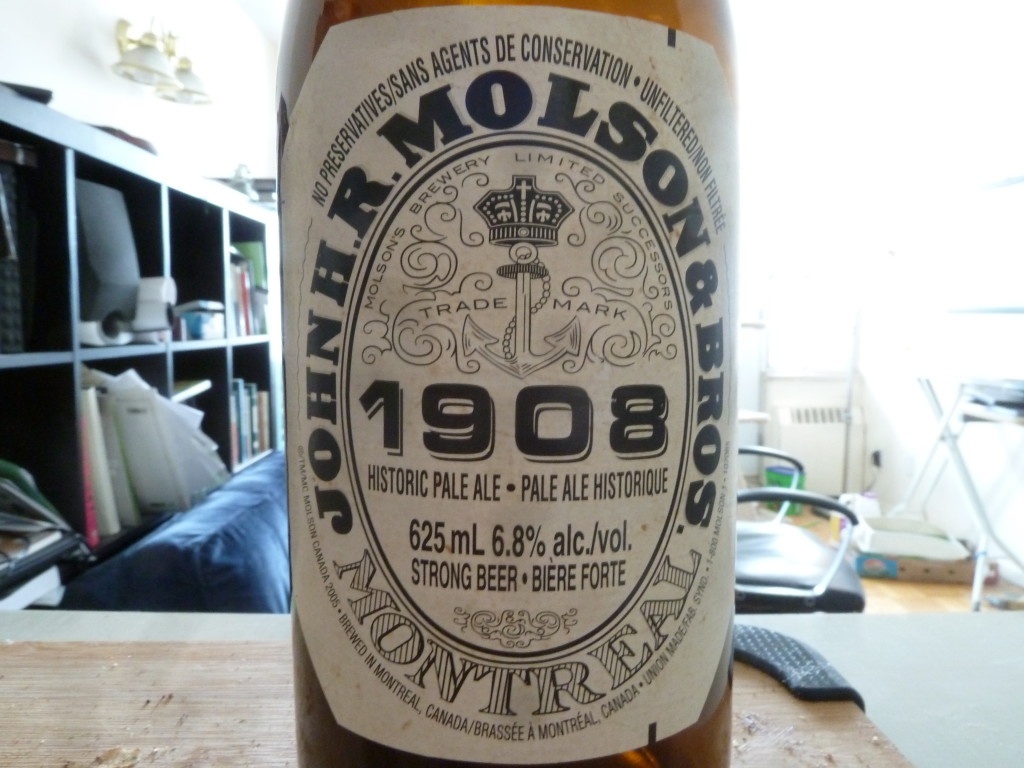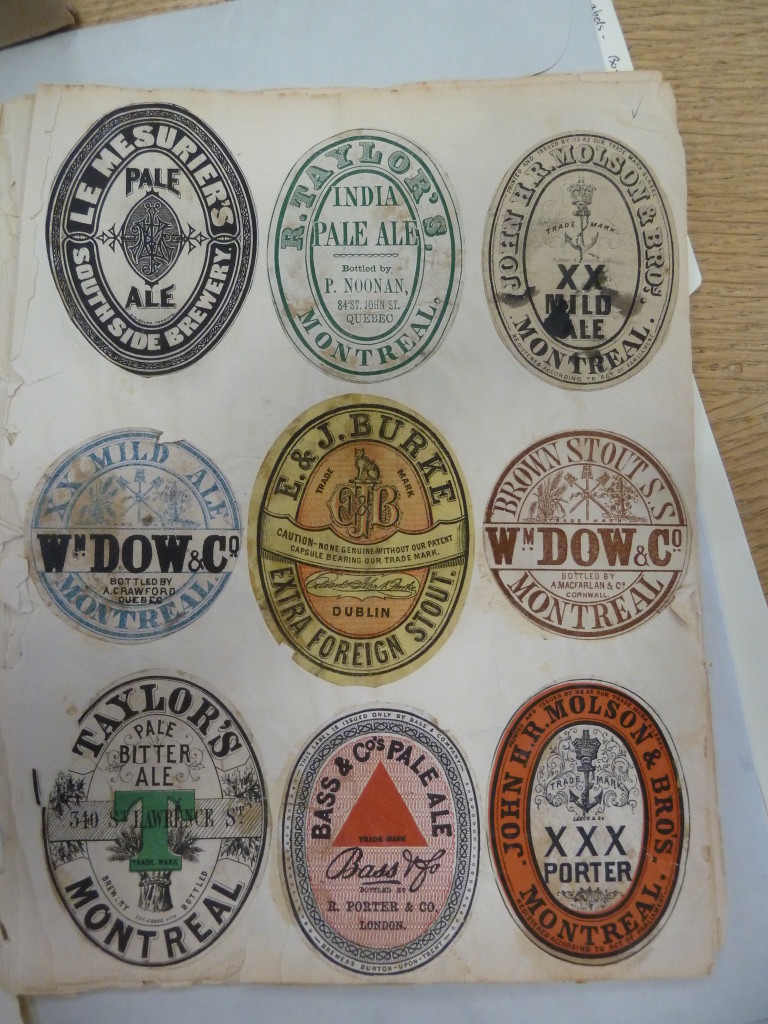Molson Coors has become more interesting as a company of late. This has to do with unpredictability. In previous years (as little as half a decade ago) they were locked in mortal combat with ABI’s Labatt in terms of their release schedule and vice versa. Bud Light Lime Mojito? Coors Light Iced Tea! Molson Canadian 67? Labatt Blue 55! Keith’s brings a knife? Rickard’s pulls a gun!
It was a kind of détente that existed for three reasons:
- It’s not the 1990’s anymore and it’s hard to pretend product development is a closed book with ~4700 breweries in North America
- Brewers gossip like your Aunt Dolly after she’s been at the sherry
- It’s really not that hard to come up with a recipe given say, three hours’ notice if you know what you have to compete with
Recently, though, we’ve gotten Molson Canadian 67 Session IPA and Rickard’s Red Session Lager. The strategies have diverged here somewhat. ABI is buying craft brewers left and right and Labatt just introduces their products into Ontario. Molson Coors, not having that roster depth, is actually having to create things.
Or re-create things.
This is how we’ve ended up with John R. Molson & Bros 1908 Historic Pale Ale.
The question that I keep seeing online is “Is it any good?” People are justifiably skeptical of historical recreation gimmick beers. 1908 is just about the best thing that a Canadian Molson Coors property has produced since Creemore Kellerbier. 1908 is a complex Pale Ale that pours a hazy golden amber with fine carbonation that leaves pronounced lace down the side of the glass. There’s a hop character that’s more spicy than citrus in the aroma with a lightly soapy character poured cold. As it warms in the glass, you get the same sort of barley malt complexity you might get out of a Worthington White Shield: fruity, somewhat berryish with maillard bread crust components and quite a bitter finish.
The thing I find amazing is the cynicism and confusion in the reception for 1908. I’ve seen criticisms calling the label hipster pandering (It’s pretty much a faithful recreation of the contemporary label) and comparing it to a Belgian Strong Ale and claiming it could have been a good beer if they had used some hops.
The point here isn’t coming up with a new recipe. This is a legitimate historical recreation. Since this is apparently a difficult concept to grasp, I figured I’d try and answer the question people ought to be asking: “How close to the original is this thing anyway?”
The thing you have to understand is that Molson and Labatt have both actually archived huge amounts of material pertaining to their activities in the 19th and 20th century. Unlike Canadian Breweries Ltd, which more or less swallowed up breweries in the 1930’s and 40’s without any concern for the intellectual property they were destroying, Molson and Labatt value their heritage. Labatt’s archives are housed at UWO and Molson’s are actually in the National Archive. I’ve been to look at the Molson Archive as part of the research for the histories I’ve written. They’re fantastically well maintained.
This is not an instance where the brewer is pretending the beer is historically accurate. They have the recipe and the brewer’s logs from 1908 and they’re trying to do right by it. Not only do they have that information, but details on where ingredients came from and on the supply chain that existed at the time.
I don’t have access to the recipe, but I do have access to both an 1897 valuation of the Pale Ale from Ron Pattinson and a 1909 valuation from the Laboratory of the Department of Inland Revenue (which you’ll find in the link under Ste. Hyacinthe.) It basically says that the beer was 6.24% ABV with an original specific gravity of 1.0497 which fermented out to 1.0043. There were no preservatives.
The brewers in charge of the project for Molson Coors were Steve Stradiotto and Keith Armstrong. They had a fairly detailed recipe to work with. Measurements for malt and hops were given in pounds and bushels. Fermentation tracking was carried out in pretty much the same way it would be today. Apparently there was some variability in alcohol content and they went higher in the range for the recreation.
Brewing process doesn’t change very much over a century. I was curious to see how they approached the problems that you’d have sourcing ingredients. As you’ll see, there are some significant problems with that process.
For one thing, nearly all of the malt used in brewing in the 19th and early 20th century in North America was made from six row barley, which is higher in protein. Malt Kilning was not quite as advanced as it is now and it was difficult to get the same light colour a modern two row pale malt has today (for those of you unfamiliar with malt kilning, it’s not unlike making toast. The old toaster just came out a skooch darker.)
The original six row malt averaged 4-4.5 Lovibond, darker in colour and possessed of a little more residual sugar. The modern malt bill tries to match that, but is a blend of four separate contemporary pale malts because modern pale malt tends to be closer to 3-3.5 Lovibond. There are no specialty or heritage malts employed. This checks out. By 1908, brewers were certainly noting the use of specialty malts in logs. Some contemporary Toronto brewers (Reinhardt) were using specialty malts brought in from Scotland and made a fuss about it in advertisement.
While we think of hops in the modern era as being separate strains, this is a product of a century of experimental breeding and specialization. In 1908, hops were really a product of the terroir they were grown in. The 1908 recipe used hops from various regions: England, Ontario and the Pacific Northwest. At the time, there weren’t hulked out alpha acid bombs. The hops were usually between 2-4.5% alpha acid. You’re talking heritage varieties.
In reproducing the hop character, the brewers used fairly old school hops. While I wasn’t able to prise all of them out of Keith, I’m given to understand we’ve got Fuggles and Cluster playing roles in the 1908. This makes sense. They’re very few generations away from wild landrace hops. Developing 47 IBU out of low AA hops must have been a very different thought process.
If we can discount the water and yeast as being (comparatively speaking) constants in the equation, it’s fair to say that the brewers have done everything they can in order to faithfully recreate the 1908 recipe. Now that said, it’s impossible for anyone to say that it’s 100% accurate. If anything, it’s probably something like 85-90% accurate as a recreation. How can you replicate something you haven’t tasted?
By the same token, it’s probably better than the original version was. The supply chain and standards for quality for both malt and hop suppliers is a lot better than it was. I’m reminded of the W.S. Walcott Medicine Show: “If you’re looking for the real thing, they can show you where it went.”

Cheers Jordan. Thanks for taking the time to speak with Keith, and glad to know that you enjoyed it.
Having drunk and enjoyed several recreations of just-pre-First World War beers from British brewers, with their emphasis on tasting the malt, I’m sure there’s a market for these styles of beers as a contrast to modern hop bombs.
Very interesting read; you’ve put together a great story line here with entertaining complexity here! Thanks for the read! Cheers, Keith
Clever man. Delicious beer.
Where are the Molson’s records exactly? I wouldn’t mind taking a look at them. Especially having seen that label for XX Mild Ale.
They’re in the National Archives of Canada and you need the approval of the company to have a look at them. That’s not so hard,though, if you know a guy.
Had it and enjoyed it. Will buy it again.
where did you buy it
I believe it’s in certain LCBO locations. They deliver now.
That is a truly fantastic beer
Proud to be from Montreal 👍
where do I find this beer to buy I have looked in several stores but cannot find t
I am looking for information on a bottle of John HR&Brothers Cream Porter
I have a green bottle of cream and porter. Very old, and in amazing condition.
I can’t seem to find any information on this exact bottle, and it’s value. Any information will be helpful
I mean, I’d take a look, but it might be easier to email me at jordan.stjohn@gmail.com and attach a picture.
I have a bottle like that as well. Mine is green, with 3 sets of #’s on bottom, along with a green triangle in centre of #’s.